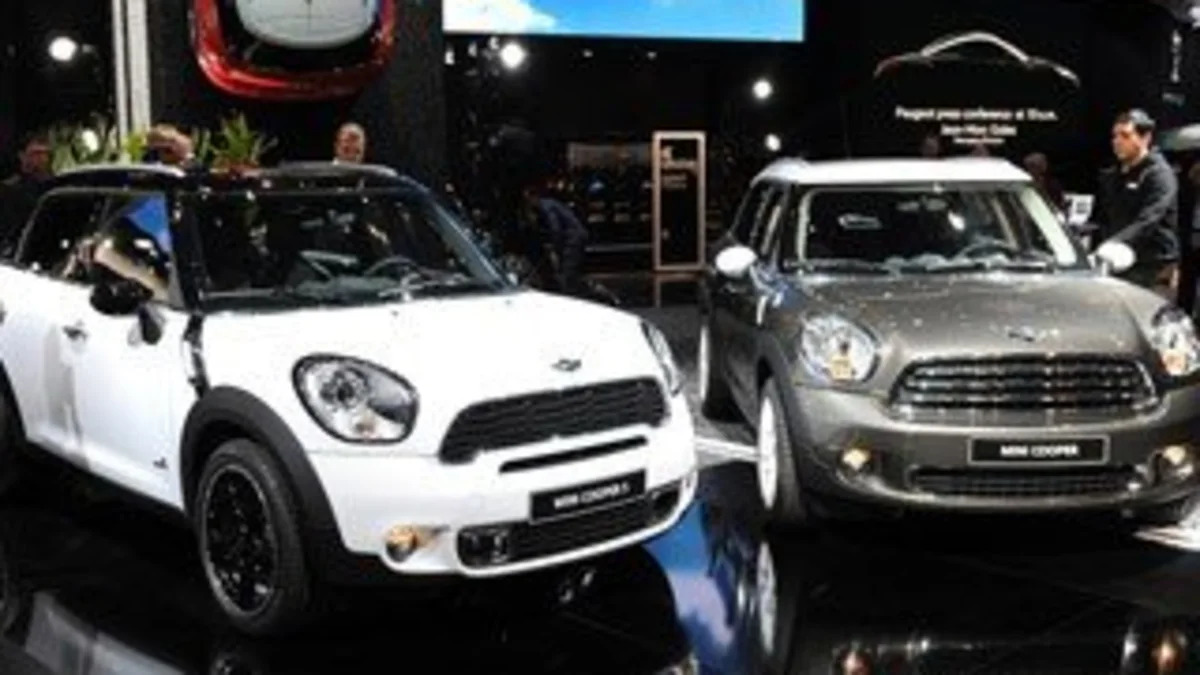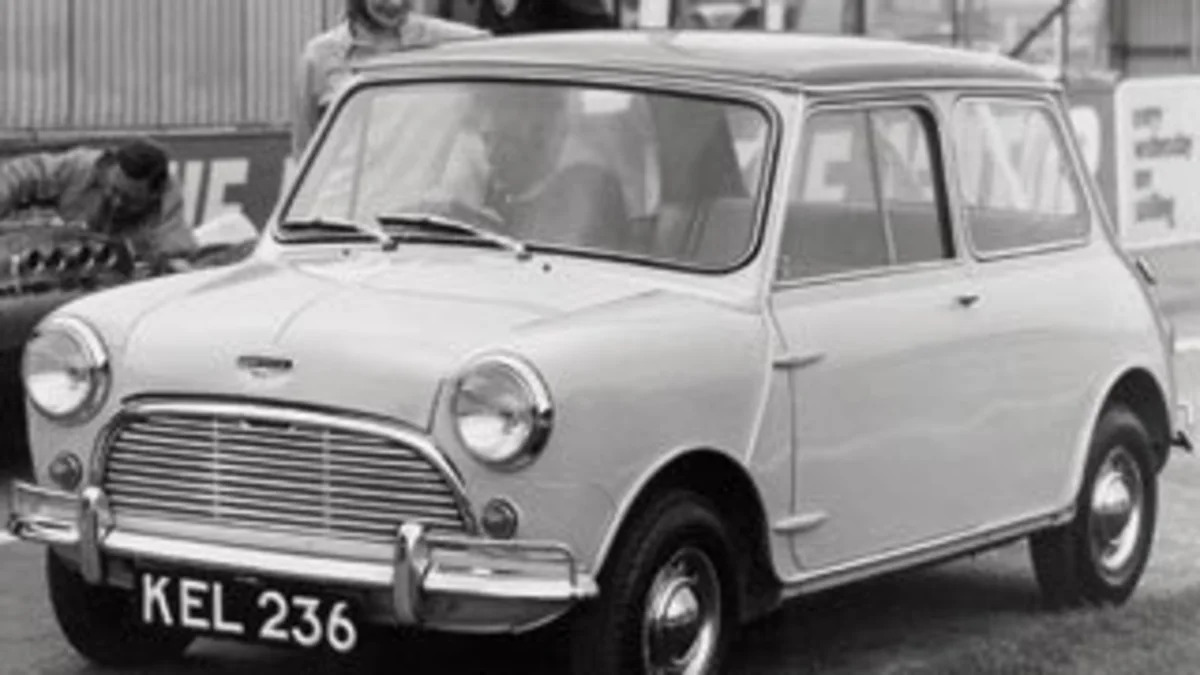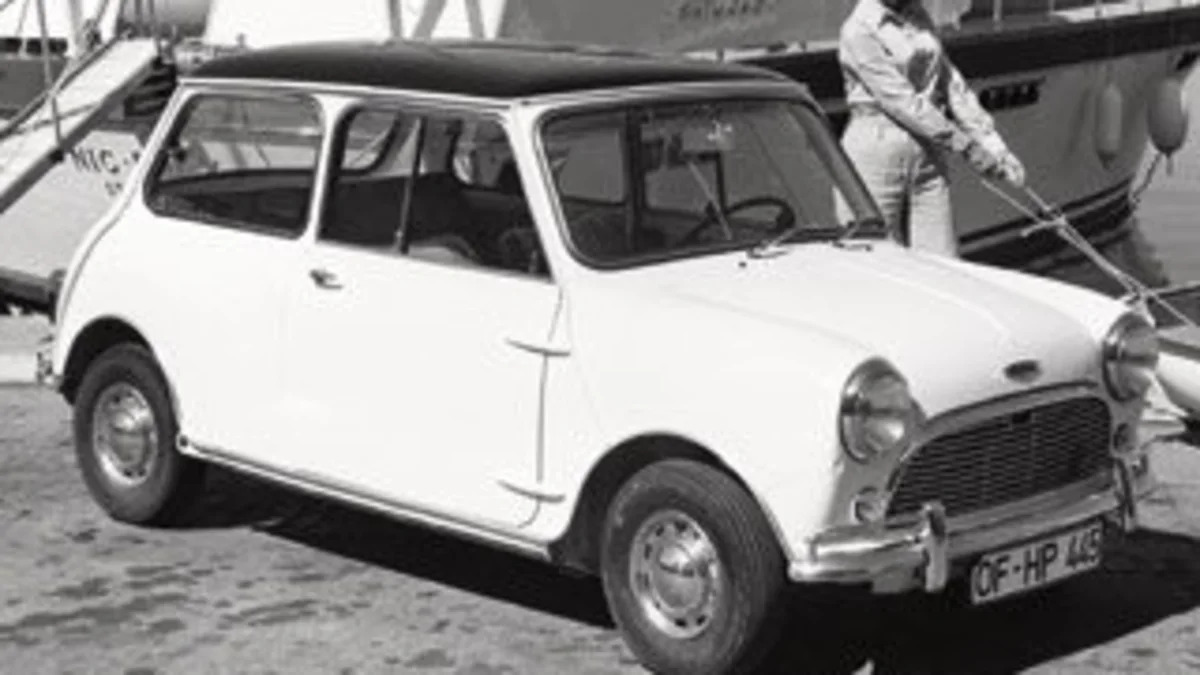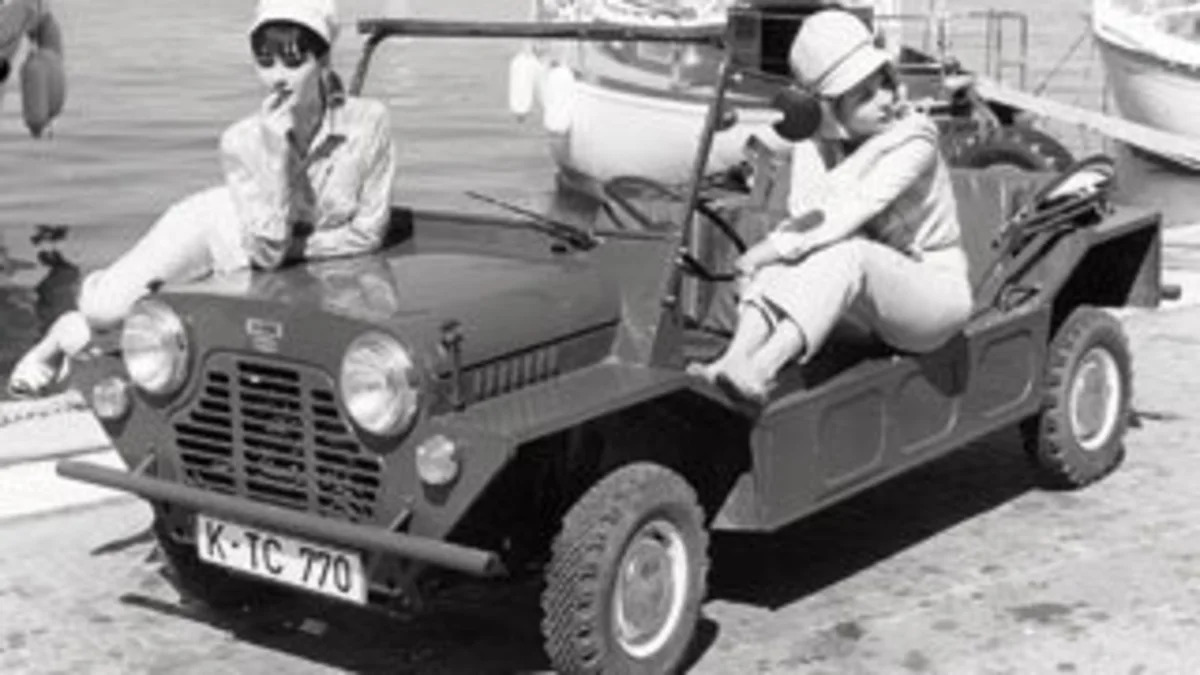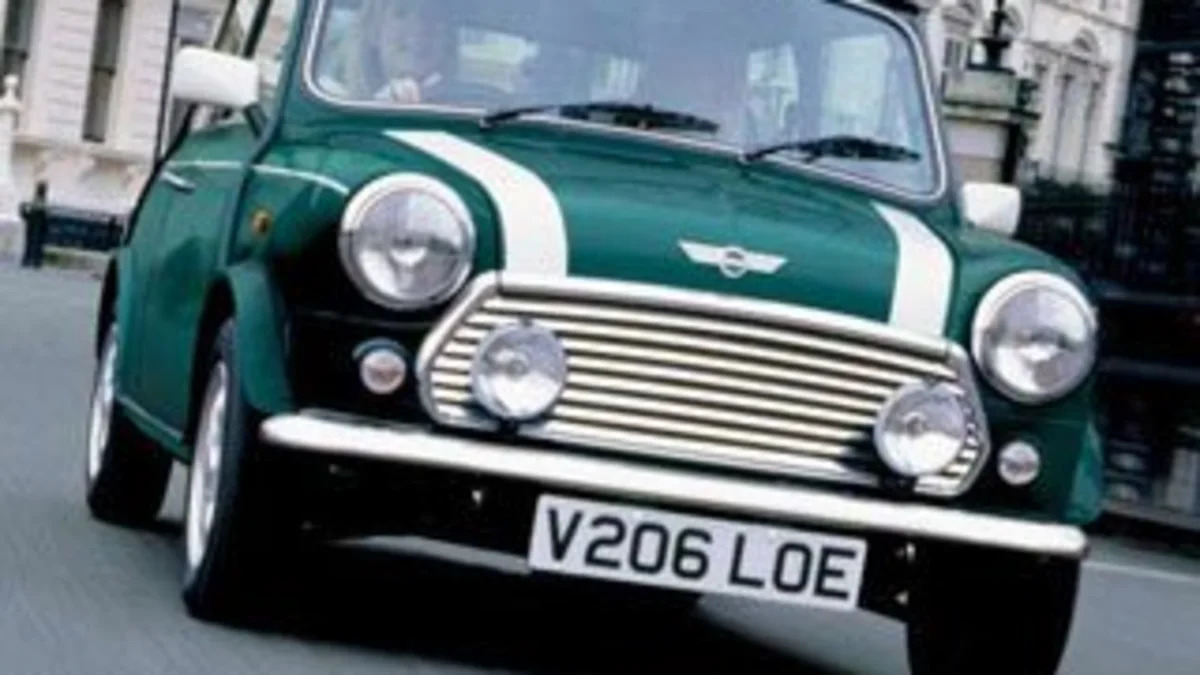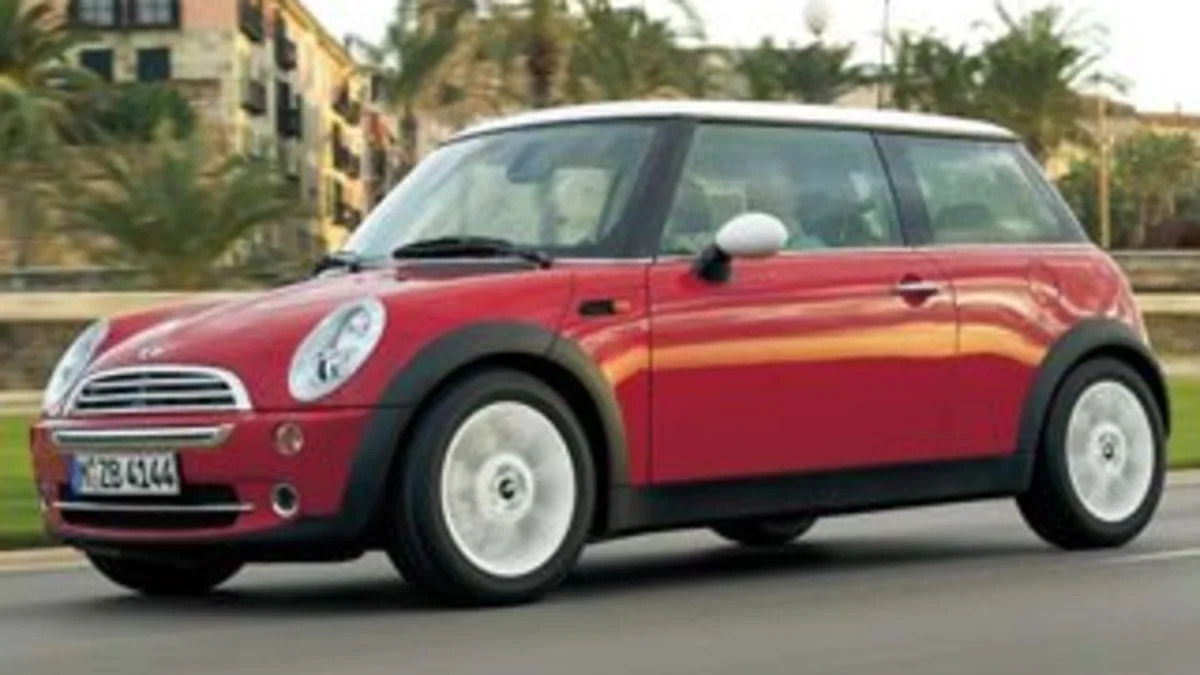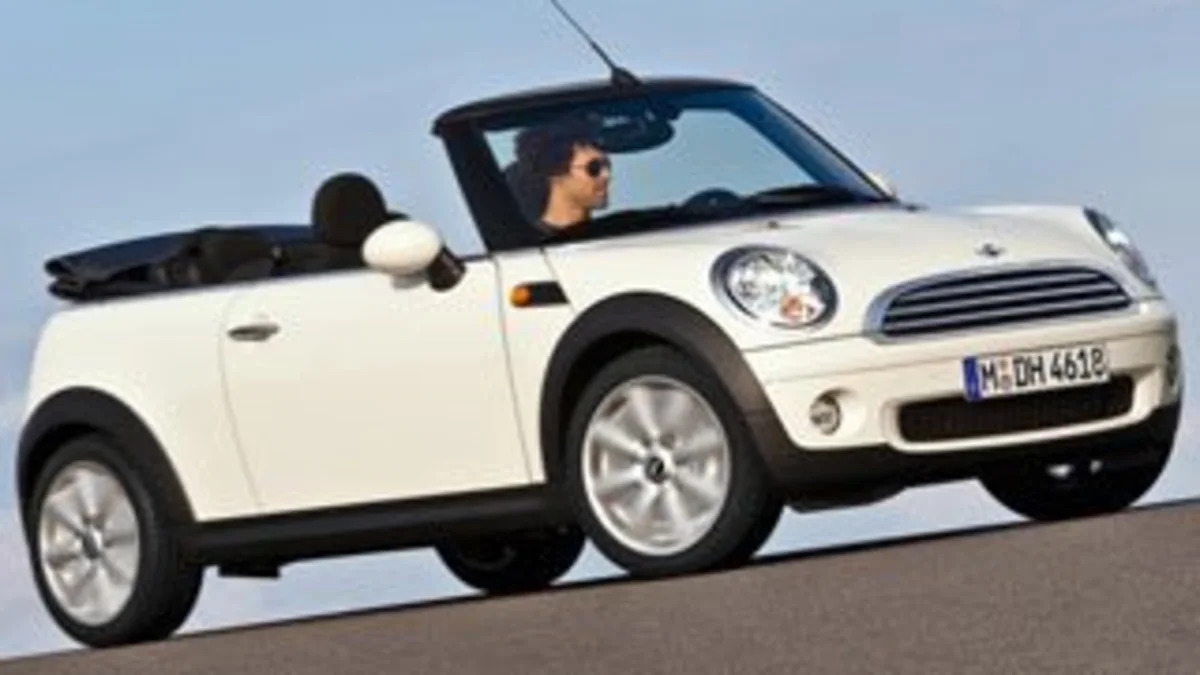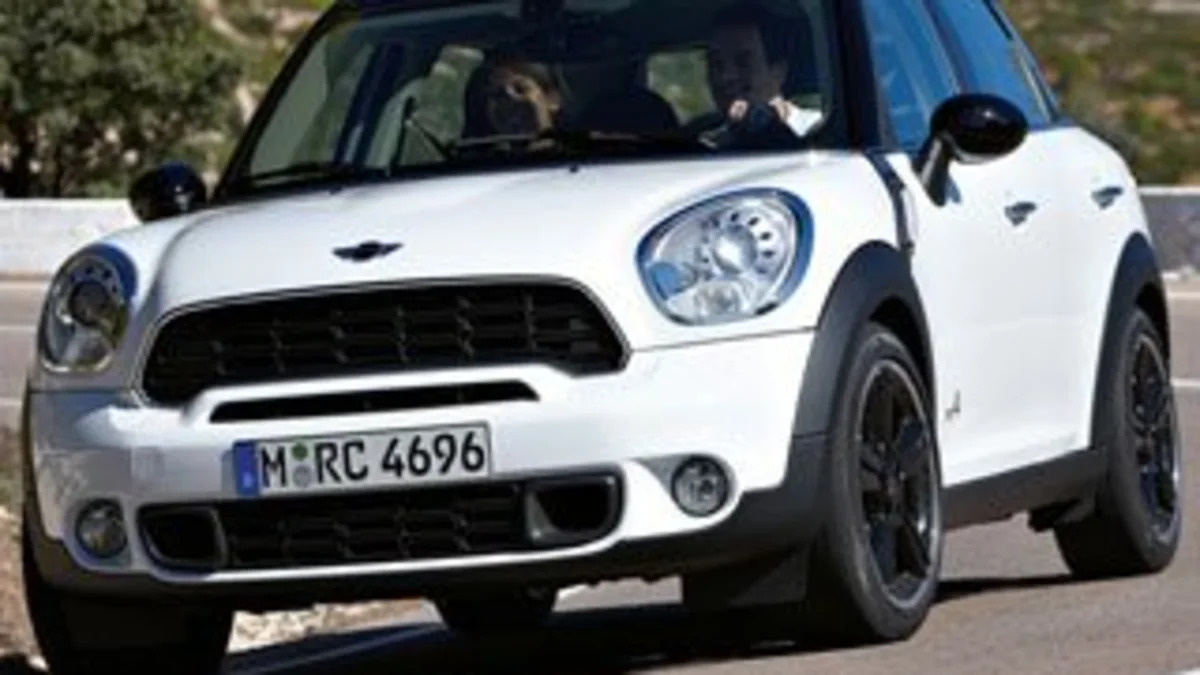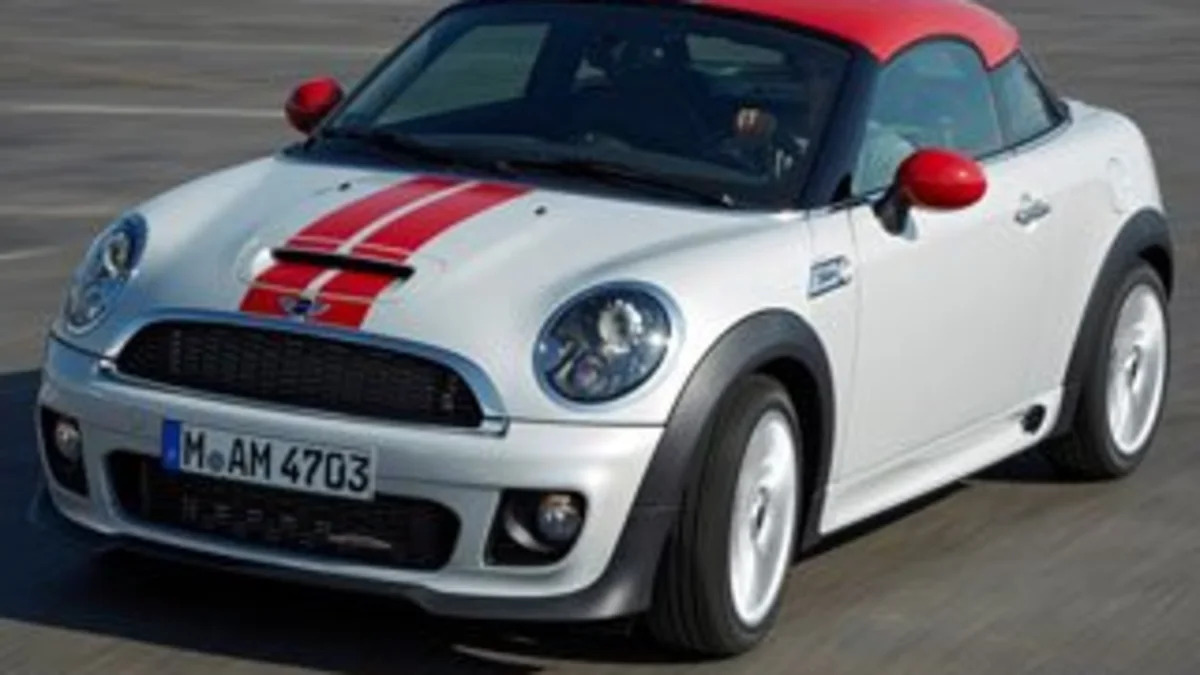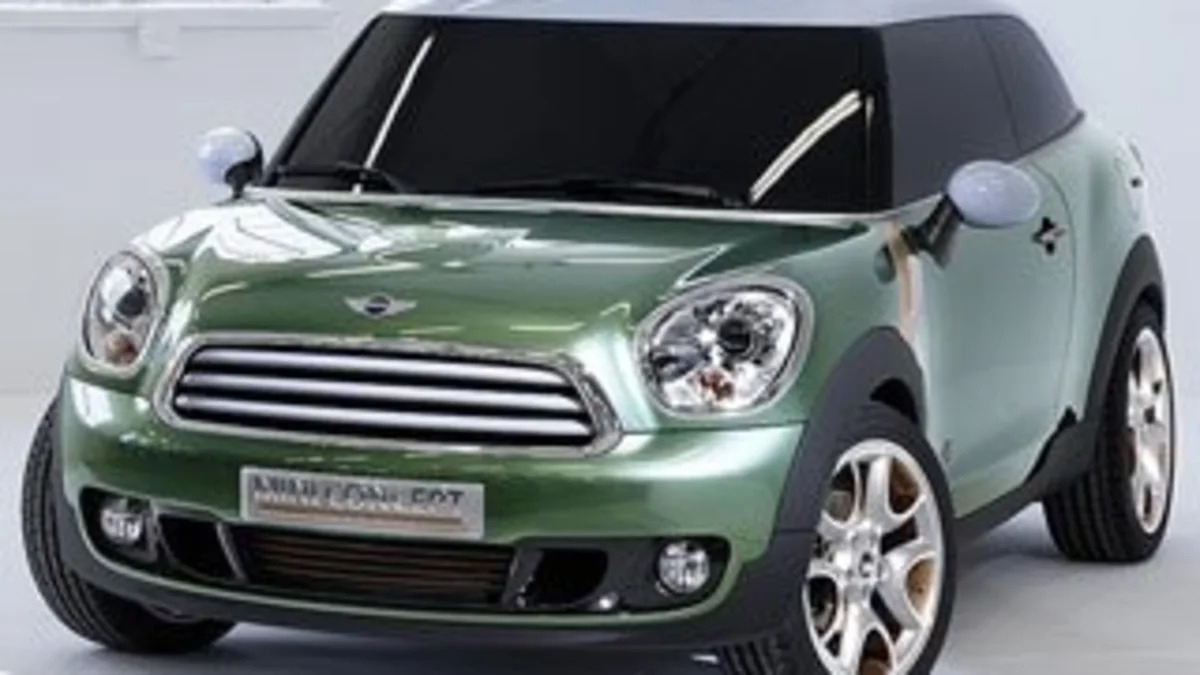Fifty Years Of Mini
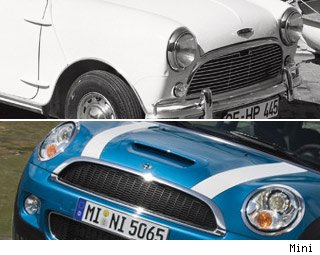
-

- Image Credit: Mini
Win A Countryman - Click Through To Find Out How
Look at any one of MINI's sharp, cool looking cars on the road today, and it's hard to believe that it's a car that almost brought down BMW as a company.
That's right. In the mid- and late-1990s the little Mini turned out to be part of the biggest single financial fiasco the storied German automaker has endured since the 1950s, costing the company billions and tearing apart its management.
BMW in 1994 had an idea that it needed to be bigger and have a line of mass-market cars and SUVs under different brand names. So, it purchased the MG Rover Group, a struggling British automaker that sold Rover brand cars, Land Rover SUVs and Mini (The brand was known as Mini before BMW acquired it, and as MINI after it was relaunched.)
The real point of the $1.34 billion acquisition of Rover was to revive the cars into a mass-market car business in Europe and North America, and grow Land Rover into a bigger presence in the luxury SUV business. MINI was really an after-thought, almost a garnish on the deal. In fact, many BMW executives figured they would phase out Mini rather than revive it. Believe it or not, the Mini Cooper car that Rover was selling in 1994, and up until 2000, had not been fully overhauled and modernized since it was originally designed in 1959. Fans of the little car with the super rough ride had dwindled to a cult following.
By 2000, Rover and Land Rover had created losses of more than $6 billion for BMW. It then essentially gave Rover away to a British investment firm, and sold Land Rover to Ford. Ford later sold Land Rover to Indian carmaker Tata.
Mini, originally just a detail in the original 1994 deal, is all that is left of the deal that roiled BMW, nearly split the company apart and caused the ouster of its CEO. -
- Image Credit: Autoblog
10 Year Anniversary
But now it is a huge business success.
Ironically, there were always some BMW executives who thought Mini was the only part of Rover that made any sense for BMW. "What some people knew at the time, but not everyone, was that Mini was really the brand in that deal that always made the most sense as a compliment to BMW's core business of designing and engineering sporty, fun-to-drive vehicles," said Kay Segler, MINI's global brand manager. "MINI was always the business that was the best fit for BMW."
The new MINI is celebrating its tenth anniversary selling cars in the U.S. Last year, it sold more than 57,000 vehicles here and more than 285,000 worldwide.
Starting with the revival of the MINI Cooper in 2002, MINI has expanded its lineup with a convertible, a coupe, a roadster, the Clubman and the Countryman. The third design of the flagship MINI Cooper since BMW took it over will debut next year.
Today's MINI is part of a storied tradition around the iconic car. Mini was conceived in the mid 1950s as the vision of designer Alec Issigonis, and introduced by the British Motor Corp. to the public in 1959. In some ways, the car was meant as an answer to the growing popularity of the Volkswagen Beetle--a small, fuel efficient, durable car for the masses that had the advantage of being roomy inside.
Are we overstating Mini's importance and influence? In 1999, it was voted the #2 most influential car of the 20th century just behind the Ford Model T, and ahead of the Beetle, by the Global Automotive Elections Foundation.
Mini has the kind of following that strong, iconic, emotional design creates. We have put together a gallery of Mini through the years, starting in 1959, and going right up to current day. Can you see yourself in one?June 30 is the last day you can register to win a 2012 MINI Countryman. All you have to do is "like" AOL Autos on Facebook and answer a few questions on the registration form.
-
- Image Credit: Mini
Mini Origins
The first Mini, launched in late 1959, was actually two cars, the Austin Seven and Morris Mini Minor. Built by British Motor Corporation, the new models were unique in offering seating for four in such a tiny vehicle, even if the two-box design didn’t allow for much luggage capacity. But by mounting the car’s four-cylinder engine transversely and employing a compact suspension with 10-inch wheels, the interior was far roomier than it had any right to be. The little Mini weighed only 1,400 pounds, but could deliver 36 miles per gallon.
-
Mini Mark I
The Mini wasn’t a runaway success, but it sold well enough that BMC was able to slowly but surely improve the car, building out more models and variants. The original Mark I design lasted until 1967, when it the revised Mark II appeared. In 1964, the rubber cone suspension was upgraded to a fluid-based Hydrolastic suspension that linked the front and rear suspensions to minimize pitching and improve the ride. A four-speed automatic transmission became available in 1965.
-
Mini Traveller
Part of the Mini’s popularity was BMC’s ability to spin so many different iterations off the basic box. A two-door station wagon variant, dubbed the Morris Mini Traveller, offered more cargo capacity thanks to its 3 ¾-inch longer wheelbase. Also sold as the Austin Mini Countryman, this Mini employed rear “barn doors” and was available with wood trim that aped the look of vintage American “woodies.”
-
Mini Moke
The Mini Moke was a quasi-military vehicle that proved unsuitable for real off-road duty, but was marketed to farmers and the like as a commercial vehicle instead. Unlike a real Jeep, the Moke didn’t come with either four-wheel-drive or a lifted suspension, but it did have a utilitarian body and a detuned engine that could run on low-octane fuel. Many Mokes found their ultimate calling as beach cruisers at island resorts.
-
- Image Credit: Mini
2000 Mini Cooper
While the Mini Mark II debuted in 1967 with a number of improvements, including a new grille and larger rear window, the Mini got a more complete reinvention in 1967. This Mark III Mini saw winding windows fitted for the first time, and bigger doors to hold them. Hinges were concealed, and the Austin and Morris brands were ditched, leaving the car called, simply, the Mini. It soldiered on with four more updates and bigger engines fitted until its final model year in 2000.
-
- Image Credit: Mini
2002 MINI Cooper
By this time, BMW had bought what was left of BMC, and having seen the Mini’s continued popularity as a niche product in Britain, launched a thoroughly modern successor in 2001. The MINI Cooper and Cooper S hatchbacks were cute and fun to drive, and proved to be wildly successful. Despite being much larger than the original Mini, the new British-built duo were still among the smallest cars on sale at launch, and their retro look was 100 percent Mini.
-
MINI Convertible
Having a hit on its hands, BMW decided to expand its lineup with a convertible model that was first shown at the 2004 Geneva auto show. Coming to market a year later, the Convertible was nominally a four-seater, but the rear seats were small, and with the top stowed the already limited cargo capacity was almost eliminated. But the open-air MINI had an innovative top that could be partially retracted like a sunroof, and it proved to be just as much fun to drive as the hardtop – perhaps even more.
-
- Image Credit: Mini
MINI Countryman
The MINI Countryman debuted as 2011 model, boasting four doors and an available four-wheel drive system. The high-riding Countryman may be a crossover, but it still retains MINI’s fun-to-drive character. It’s the first MINI model that’s large enough to be considered a compact, rather than a subcompact, by the EPA.
-
- Image Credit: Mini
MINI Coupe
The two-seat MINI Coupe was an unexpected extension of the MINI formula when it launched in 2011. While still a hatchback like the hardtop, the Coupe dispenses with the rear seat to give the car a real – though small – trunk. The Coupe has a more steeply raked windshield than the hatchback, which makes its roof height lower. That makes the cabin a tighter space, more akin to the sports car the Coupe desperately wants to be.
-
- Image Credit: Mini
MINI Roadster
The MINI Roadster is the follow-up to the Coupe, just as the Convertible was to the hardtop. Take the Coupe’s "helmet" roof and replace it with a conventional convertible top and you’ve got a Roadster. Without the diminutive rear seats of the Convertible or the ungainly roof of the Coupe, the Roadster is perhaps the most purpose-built MINI ever. This is a car designed for enthusiasts, borrowing the best bits from the MINI parts bin and combining them into a great driver.
-
- Image Credit: Mini
MINI Paceman Concept
MINI debuted the Paceman Concept at the Detroit auto show in January 2011. Essentially a two-door version of the Countryman crossover, the concept was reportedly approved for production shortly thereafter. We could see the production model as soon as this fall’s Paris Motor Show, though we expect to see it renamed Countryman Coupe. Whether it debuts at Paris or not, it isn’t likely to go on sale until the middle of next year, as a 2014 model.
